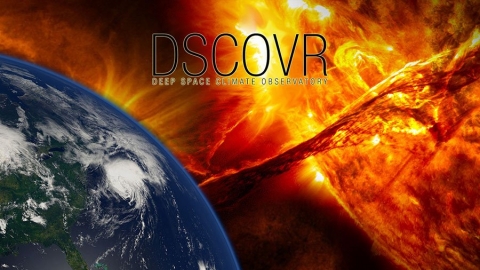Jun242016
Posted at 10:19 AM
NOAA’s first space weather satellite, DSCOVR, has completed instrument validation and will go operational on July 27, when it will take over the role of monitoring potentially damaging space weather storms as they approach Earth.
DSCOVR, which stands for Deep Space Climate Observatory, brings improved measurements and higher quality data than currently available, giving forecasters better information with which to issue critical space weather warnings and alerts.
“Even though the sun is 93 million miles away, activity on the surface of the sun can have significant impacts here on Earth,” said Tom Berger, director of NOAA’s Space Weather Prediction Center. “Severe space weather can disrupt power grids, marine and aviation navigation, satellite operations, GPS systems and communication technologies. DSCOVR will allow us to deliver more timely, accurate, and actionable geomagnetic storm warnings, giving people time to prevent damage and disruption of important technological systems.”
DSCOVR’s primary space weather sensors are the Faraday Cup plasma sensor, which measures the speed, density and temperature of the solar wind, and a magnetometer, which measures the strength and direction of the solar wind magnetic field. Together, the instruments provide forecasters with the necessary information to issue geomagnetic storm warnings.
Data from DSCOVR, which will be available to the public in real-timeonline, will allow forecasters to provide space weather warnings and alerts up to an hour before a surge of particles and magnetic field generated by solar storms hit Earth. The Space Weather Prediction Center (SWPC) provides forecast products and data to infrastructure operators and the general public through its email alert service to more than 47,000 subscribers. Owners or operators of potentially vulnerable technologies can then take steps to protect their equipment or services.
SWPC, the nation’s official source for space weather forecasts, watches, warnings, and alerts, operates 24-hours a day, seven day a week from Boulder, Colo. SWPC is one of nine centers under NOAA’s National Centers for Environmental Prediction.
NOAA’s mission is to understand and predict changes in the Earth's environment, from the depths of the ocean to the surface of the sun, and to conserve and manage our coastal and marine resources. For updates, follow them on Twitter, Facebook, Instagram and our other social media channels.

